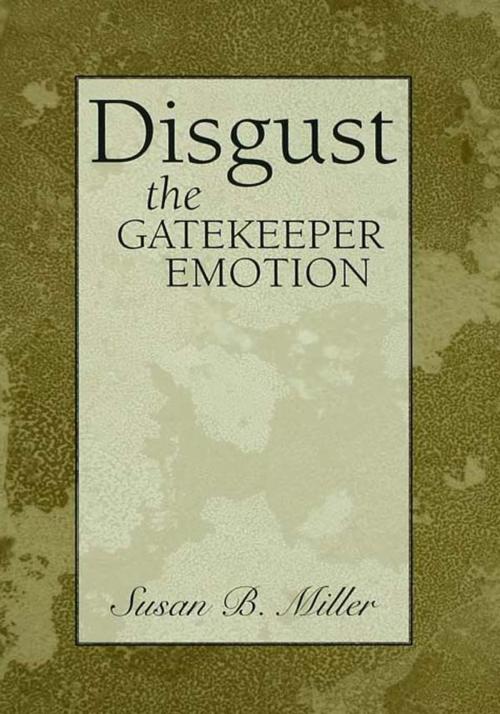| Author: | Susan Miller | ISBN: | 9781134910779 |
| Publisher: | Taylor and Francis | Publication: | May 13, 2013 |
| Imprint: | Routledge | Language: | English |
| Author: | Susan Miller |
| ISBN: | 9781134910779 |
| Publisher: | Taylor and Francis |
| Publication: | May 13, 2013 |
| Imprint: | Routledge |
| Language: | English |
Susan Miller, author of two foundational works on shame (The Shame Experience [TAP, 1985/1993pbk]; Shame in Context [TAP, 1996]), now turns to disgust, an intriguing emotion that has received little attention in the professional literature. For Miller, the psychological study of disgust revolves around boundary issues: We tend to feel disgusted about things (from bodily processes to decaying organic matter to ethnic attributes of "foreign" people) that lie on the border between our sense of self and nonself or between our sense of "good self" and "bad self." Miller's clinical and everyday examples of disgust lead her to explore the developmental grounding of the capacity to disgust, and this topic opens to consideration of the relation of the various sensory modalities to disgust reactions. Why, Miller asks, do we see disgusting images and smell disgusting smells but not hear disgusting sounds? And further, what makes sensory impressions or objects "disgusting" to certain people but not to others? Why do the images and smells of disease so frequently elicit disgust? And what is the relation of disgust to sex, procreation, and human intimacy?
Laced with developmental insights and vivid illustrations of disgust-related syndromes, Disgust: The Gatekeeper Emotion incorporates cultural analysis that links disgust to images of illness and health, to family life, to group identity, and to artistic and scientific creativity. For Miller, the central disgust dialectic - the self's need to safeguard itself against noxious intrusions from without and simultaneously to nourish itself through contact with "otherness" - obtains whether the discourse concerns nature, nations, or noses. With her typically graceful and gracious prose, Miller puts disgust on the psychological map and thereby adds a chapter to our understanding of the role of emotion in therapy and in everyday life.
Susan Miller, author of two foundational works on shame (The Shame Experience [TAP, 1985/1993pbk]; Shame in Context [TAP, 1996]), now turns to disgust, an intriguing emotion that has received little attention in the professional literature. For Miller, the psychological study of disgust revolves around boundary issues: We tend to feel disgusted about things (from bodily processes to decaying organic matter to ethnic attributes of "foreign" people) that lie on the border between our sense of self and nonself or between our sense of "good self" and "bad self." Miller's clinical and everyday examples of disgust lead her to explore the developmental grounding of the capacity to disgust, and this topic opens to consideration of the relation of the various sensory modalities to disgust reactions. Why, Miller asks, do we see disgusting images and smell disgusting smells but not hear disgusting sounds? And further, what makes sensory impressions or objects "disgusting" to certain people but not to others? Why do the images and smells of disease so frequently elicit disgust? And what is the relation of disgust to sex, procreation, and human intimacy?
Laced with developmental insights and vivid illustrations of disgust-related syndromes, Disgust: The Gatekeeper Emotion incorporates cultural analysis that links disgust to images of illness and health, to family life, to group identity, and to artistic and scientific creativity. For Miller, the central disgust dialectic - the self's need to safeguard itself against noxious intrusions from without and simultaneously to nourish itself through contact with "otherness" - obtains whether the discourse concerns nature, nations, or noses. With her typically graceful and gracious prose, Miller puts disgust on the psychological map and thereby adds a chapter to our understanding of the role of emotion in therapy and in everyday life.















